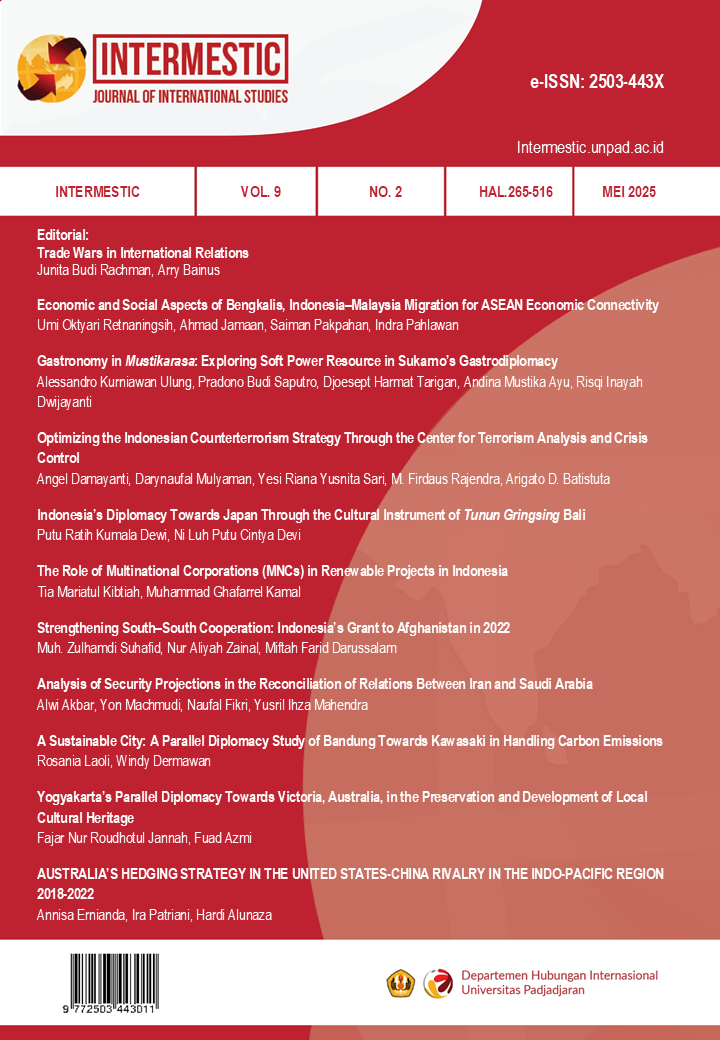The Economic and Social Aspects of Bengkalis, Indonesia-Malaysia Mobility for ASEAN Economic Connectivity
Main Article Content
Abstract
Prosperity becomes the goal for society in the world. Scholars have their own approaches and measures to achieve it. One of ASEAN goal is to create a stable, prosperous and highly competitive economic region. Regional economic integration can be accomplished with maritime connectivity due to geographic location, particularly between Bengkalis, Indonesia with Malaysia (Muar, Malaka, Kuala Lumpur). Bandar Sri Setia Raja could reduce transport cost, provide more efficient service and increased opportunities from tourism. Port connectivity will affect social and economic lives of Bengkalis residents. The research elaborated how significant role of Bandar Sri Setia Raja seaport for resident mobilization for social and economic activities, the challenges, and prospects. This research was mixed of quantitative and qualitative methodology of 15 male travellers to Malaysia, 5 female tourers, and 10 male and female local residents’ tourists to Malaysia for leisure and healing. Secondary data from Indonesian official report, statistics, and news were utilized to describe economic gain. In-depth interviews tried to collect detailed data of migrant voices about their experiences, challenges, and hopes. The study showed Sri Setia Raja port could afford ASEAN economic community as well as social benefit. Bengkalis residents were able to save money, time and energy to visit Malaysia for working, healing, and doing micro business. Bengkalis Island locates quite far from Pekanbaru’s international airport or Dumai’s international port so Sri Setia Raja is the best option to go overseas.
Article Details
Issue
Section
The authors submitting a manuscript do so on the understanding that if accepted for publication copyright of the article shall be assigned to Intermestic: Journal of International Studies, International Relations Department, Padjadjaran University as the publisher of the journal.

